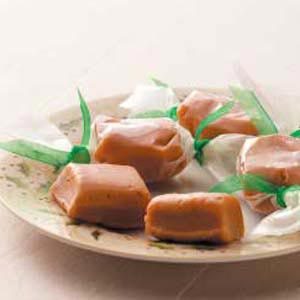I'm not sure exactly how many I pulled off of everyone but it was hundreds. Now why on earth did we get ticks and not Shaun? We discovered the answer when I looked for an herbal remedy to rid the dog totally of those nasty little creatures.
Prior to our camp out Shaun and I had been reading a most interesting book by Stephen Harrod Buhner;Sacred and Herbal Healing Beers. He was intrigued by a beer that contained the herb artemisia absinthium also known as wormwood,the ingredient that gives absinthe its flavor and bad reputation. He was also interested in a beer with yarrow, and one with juniper. Well he was interested in all the recipes and couldn't make up his mind so he mixed them all together. Now I'm sure he didn't measure so I can't give you the recipe but it doesn't matter because the stuff was dreadful ,absolutely dreadful.It was so bitter that one swallow was all I could take. He however, wasn't going to waste all that good beer so he sipped it throughout the entire campout. I suppose the bugs must have felt the same way about Shaun's herbal healing brew as I did because they didn't touch him.
When I consulted my herb books for an insect spray it read something like this- "Herbalists have used different combinations of aromatic herbs to kill and repel pests for millennia. Wormwood, yarrow,and juniper are most effective." He got the last laugh on that one.
I always question the long term safety of deet based repellents and even if they are proven safe, the smell is just nasty.
Health food stores sell many all natural repellents that are effective and smell pleasant however they are all expensive.
I always question the long term safety of deet based repellents and even if they are proven safe, the smell is just nasty.
Health food stores sell many all natural repellents that are effective and smell pleasant however they are all expensive.
Tick season is at it's peak and the wisdom of God is such that the very herbs that repel insects are now ready to be harvested. Most likely you have an "weed" or two growing in your yard that can be used to ward off skeeters, ticks, no see ems and other pesky bugs.
 |
A simple repellent can be made
crushing the fresh leaves of
mint, basil,and/or lemon balm.
|
The list of insect repellent herbs is exhaustive.
A few of the most common include:
Artemisia/wormwood
basil
bay
catmint
cedar
citronella
clary sage
coriander
elderflower
fleabane
ginger
juniper
eucalyptus
frankincense
geranium
juniper
lavender
lemon balm
lemongrass
mints
pennyroyal
rose geranium
rosemary
rue
sage
sandalwood
thyme
vanilla
yarrow
There are many ways to make repellents.
1.You can do it my husbands way and drink it. Apple cider vinegar and garlic are the most commonly recommended internal remedies. If you are brave enough to try herbal brews consult the book Sacred Herbal Healing Beers. Remember the evidence for effectiveness and safety is purely anecdotal.
2. Tinctures are effective ways to extract the active constituents of herbs.Tinctures are simply herbs soaked in a solvent, usually alcohol or vinegar.
3. Essential oils are highly effective albeit expensive insect repellents.
Here are 4 recipes to get you started. Remember, be creative and feel free to experiment.
Garlic and Apple Cider Vinegar Tick Drink
In a quart mason jar crush a clove of garlic. Add 2 tbs apple cider vinegar,preferably organic unfiltered.
Allow the mixture to steep for 1 hour. Next add a tbs honey or more to taste. Then fill the jar up with fresh water.
Hold your nose and drink up!You can also rub it on your skin without the honey.
The results should last as long as you can still taste the garlic.
Unfortunately, bugs may not be the only thing you repel!
Everclear Bug Be Gone
 1 handful fresh wormwood leaves
1 handful fresh wormwood leaves1 handful yarrow leaves
1 handful fresh mint leaves
1 tbs dried basil ( it's not in season yet)
5 bay leaves
1/4 cup juniper berries or cedar berries
Place all ingredients in a quart mason jar. Cover the herbs with Everclear or another clear flavorless alcohol. You can use isopropyl alcohol but it tends to dry out skin.
Allow the mixture to steep for at least a week.
Gently swirl the mixture every few days.
When the tincture is made strain it through cheesecloth into a clean mason jar. Add 1/4 cup per quart of water. Place in a sprayer and use like store bought spray.
You need to reapply every few hours or after sweating and swimming.

Herbal Tea Bug be Gone
 Use the same herbs as above but instead of alcohol use a quart of water. Bring the water to a boil and pour over the herbs. Steep for an hour. Strain the mixture.Place it into a sprayer and use it straight.
Use the same herbs as above but instead of alcohol use a quart of water. Bring the water to a boil and pour over the herbs. Steep for an hour. Strain the mixture.Place it into a sprayer and use it straight.Essential Oil Bug Repellent
rose geranium essential oil
citronella essential oil
lavender essential oil
eucalyptus essential oil
or a combination of three from the list above
olive/grapeseed/almond oil
Fill a pint jar with a carrier oil such as olive.
To it add 10 drops of each of the chosen oils.. You may add more if you want a stronger fragrance but do not exceed 75 drops.
To use, dip a cotton ball into the oil. Dab it onto the backs of your legs and wrists.
This is very long lasting.Reapply after swimming or sweating.



